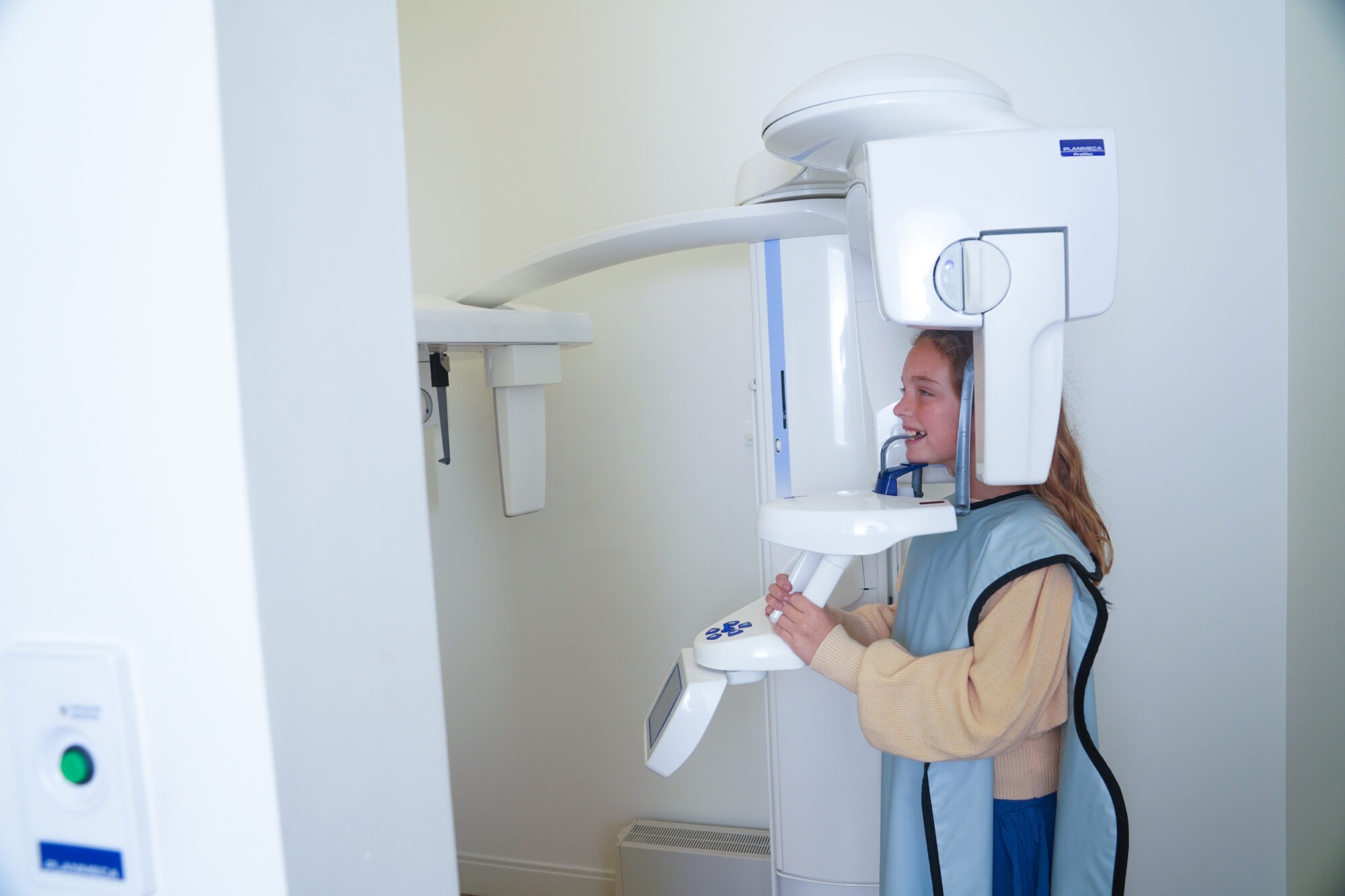X-rays are an incredible tool commonly used in the orthodontic world. Sandifer Orthodontics is a leading office in high-quality care and uses them as a resource to create personalized treatment plans for our patients. You have likely heard of x-rays before or have even had one or some prescribed to get a better view of your teeth, but why do orthodontists use them? Read on to learn more about their purpose, the different kinds we take, and what you can expect when you are in our office.
Everything You Need To Know About X-Rays
Also known as dental radiography, x-rays are a standard tool used in diagnosing oral issues with the help of electromagnetic waves. These waves are emitted to take images, using radiation to reveal your bone and tissue. They allow us to see the internal functions of your teeth and jaw, their bone structure, your roots, and so much more.
How Are Dental and Orthodontic X-Rays Unique?
Every year, your dentist likely takes an x-ray of your teeth to keep an eye out for common dental issues. They will reveal signs of tooth decay, bone loss, infection, cavities, and more. If you recently got one within the past six months before coming into our office, Sandifer Orthodontics will be able to reference it while we create your personalized care plan.
While all that information is crucial for us to consider for your treatment, we may need to know a different set of details to move your care forward. Orthodontic x-rays, on the other hand, focus on things such as tooth and jaw alignment, permanent versus baby teeth, roots, and more. We will let you know if we need to take an additional scan.
Why Do We Use Them?
This diagnostic tool offers an abundance of information to examine while we figure out what oral complications you have and how to create your unique treatment plan to resolve them. We use x-rays to track your progress to make sure your teeth are shifting the right way.
Are They Harmful?
No, x-rays are not harmful! There is very minimal risk involved in the small amount of radiation exposure involved. Because x-rays take less than a minute, the benefits of receiving an appropriate diagnosis outweigh the risks. Either way, we take every precaution to keep you safe by providing safety gear and only asking you to get one when necessary.
Understanding The X-Ray Process
Preparatory Steps
Before getting to the machine, the first step in taking your x-ray is preparing your lead apron and removing metal objects from your body. The lead apron is placed over your head, resting on your shoulders and down to shield the parts of your body not necessary for the x-ray from radiation.
Metal objects, such as glasses, earrings, a necklace, hearing aids, and similar items, should be removed to ensure the accuracy of the image.
Assuming The Correct Position
They will then explain the correct positioning of your jaw and teeth so that we capture the perfect angle. We then ask you to remain in this position until the procedure is complete, which will only be a few minutes.
Capturing Your Images
Once you are in place with safety gear on, our treatment coordinator will set up the machine to take your x-rays. All you need to do is stand still while it does all the work. This quick and painless process uses a focused beam of radiation toward your teeth and jaw as it generates an image of what is going on internally.
Assessing Your Results
You are all done with your x-ray! From here, you will see how the images turned out before they are handed off to Dr. Sandifer for review. Bringing her expertise to the table, she will share information helpful to your treatment and how we can help you work through your oral complications.

Tracking Your Teeth As They Shift
Free Consultation
X-rays are one of the many tools Sandifer Orthodontics uses in determining your treatment plan. During your first visit, we ask that you bring in a panoramic x-ray from the past six months. If you do not have one, we will be happy to set one up so we have the most updated information in determining what orthodontic treatment is best for you.
During Treatment
We only take x-rays when necessary: one can expect to have x-rays taken for initial records, progress records, and final records. They are very important in diagnosing your specific case, monitoring treatment progress, and assessing the final outcome. We will look to your x-ray as a means of identifying what areas of your teeth need additional attention for fine-tuning. Our team will work on these last teeth to ensure you have the best placement.
After Your Appliance Is Removed
Once treatment is complete, Dr. Sandifer will capture one final x-ray to ensure the work done to your bones and jaw on the inside matches what we can see from the outside. You can also compare the two scans from the beginning of your treatment to the end and see how much your teeth have improved.
Are There Different Kinds Of X-Rays?
Panoramic
Yes, there are two types of x-rays we use, the first being a panoramic x-ray. A panoramic x-ray provides a broad view of your jaw joint (TMJ), upper and lower jaws, and teeth to discern your alignment and current development. It gives our team a solid understanding of everything in your mouth so we can use that information when creating your care plan.
Cephalometric
The other type we use is a cephalometric, or more simply referred to as the orthodontic x-ray. It captures a highly detailed view of the relationship between your upper and lower jaw, your facial bones and the rest of your oral structure.

Expertise You Can’t Find Anywhere Else
Our team at Sandifer Orthodontics are experts in capturing and analyzing x-rays to help you move another step closer to your perfect smile. We will happily answer any lingering questions about the procedures or general orthodontics you have. Give us a call today and schedule your free consultation at our Jackson or Brandon Satellite practice locations. We can’t wait to begin working!
